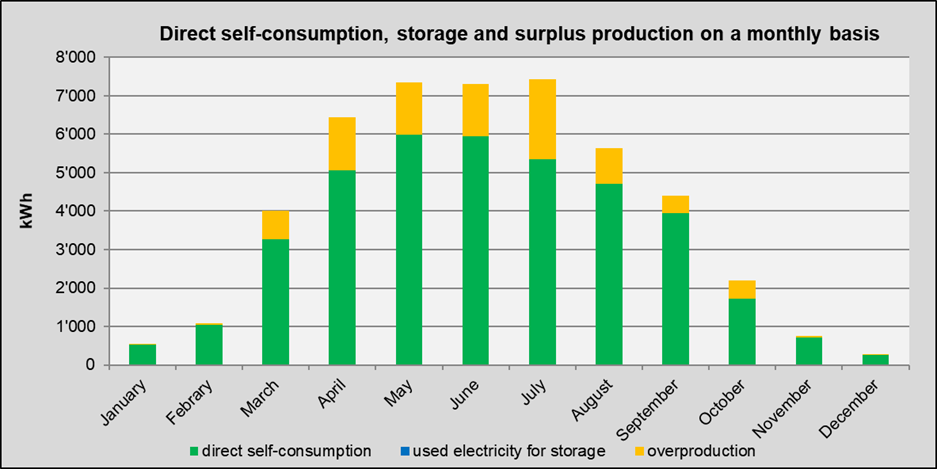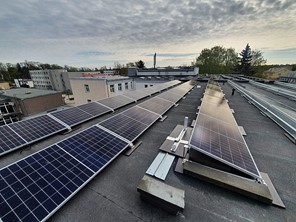The EFFECT4buildings prosumerism tool helps with calculations regarding PV system in the project planning stage. It helps determine the optimal size of the PV system, find out how much electricity can be produced from a selected area, make financial calculations, and helps find out how a storage system would improve PV system’s efficiency. Vidzeme Planning Region tested the tool in Gulbene municipality in 2019 and helped with EPC (Energy Performance Contracting) principles when procuring the service provider.
Gulbene municipality was planning to install solar power plant on the roof of the local government administration building. This building had continuous electricity consumption to ensure uninterrupted functions of different electrical appliances which made it suitable for a solar power plant. Also, the roof of the building was well suited for solar panels, not having any shadow from the surrounding objects. Since the municipality already knew the area for PV system and the planned PV system’s capacity, the Prosumerism tool was used for calculation of solar electricity production and for financial calculations. One of the Prosumer tool results are given below, where total used electricity from PV are shown in green color but yellow color represent overproduction which in Gulbene case will be sold in the electricity grid.

The Prosumer tool can be used to answer two basic needs:
(1) by using existing data of yearly electricity needs and energy load profile, entering planed PV system’s capacity and the optimal production profile, the tool calculates energy production and consumption results
(2) by entering the energy amount the PV system can produce and use and other existing data about specific countries energy production/transportation/selling prices and data on the chosen area, the tool does financial calculations.
The evaluation tool can be used both ways – by knowing PV system’s capacity and production profile you can calculate its electricity production and by knowing how much electricity you need to produce, you can calculate what capacity needs to be installed.
The profitability assessment in the financial calculations is based on:
- savings that come from the amount of electricity that no longer needs to be purchased
- income that comes from the amount of produced electricity that is sold to the grid
- investments that come from developing the PV system.
Internal rate of return and the pay-back-time is calculated from total investment costs and total savings plus income.
During the project development, data from the tool was taken in consideration. Based on the calculated amount of electricity that PV system can produce, procurement included energy efficiency guarantees and description of the measurement and verification methodology. Gulbene municipality’s PV system procurements technical specification included that the system must produce at least 49,60 MWh electricity a year, system’s capacity must be at least 54,60 kW and, when taking in consideration solar panels’ 25-year capacity guarantee for 80% efficiency, PV system’s efficiency in 5 years cannot go lower than 16,456%. During these 5 years once a year the produced electricity amount will be measured to see if it reaches the guaranteed amount at specific solar radiation. If the solar radiation changes, the guarantee changes according to the measured solar radiation data.
This approach helped to ensure that the municipality bought a system that will reach its energy efficiency goals. Gulbene municipality installed 158 solar panels and estimate that their investment will have a payback time of 6 years thanks to the 70% co-financing by the National Emission quota instrument.
Top photo: Solar panels on Gulbene municipality roof (Picture from Gulbene municipality)
About EFFECT4buildings:
EFFECT4buildings is implemented with the support from Interreg Baltic Sea Region Program 2014-2020 (European Regional Development Fund) and Norwegian national funding. The aim of the project is to improve the capacity of public building managers in the Baltic Sea Region by providing a comprehensive decision-making support toolbox with a set of financial instruments to unlock the investments and lower the risks of implementing energy efficiency measures in buildings owned by public stakeholders.
For more information: https://www.effect4buildings.se
Authors: Rūta Ročāne and Jānis Ikaunieks, Vidzeme Planning Region, Latvia













